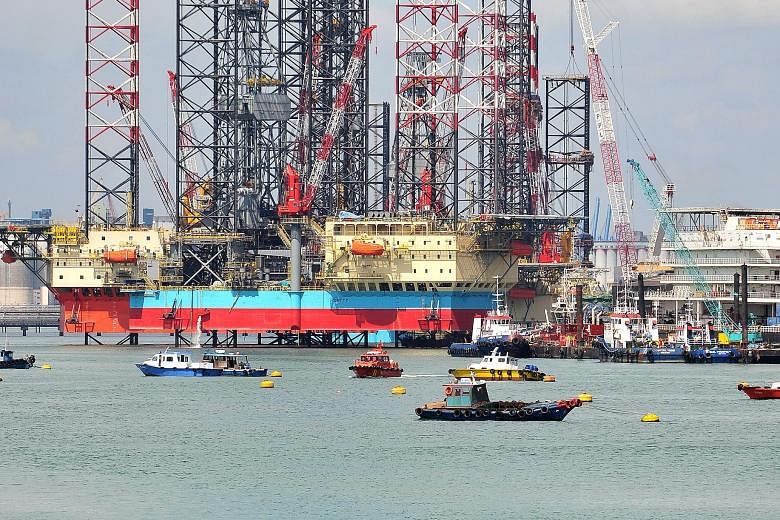The Straits Times Index (STI) achieved the dubious distinction of being South-east Asia's worst-performing index for last year, as it shed 14.3 per cent of its value.
The culprits include corporate earnings downgrades on wariness over United States interest rate hikes, finally confirmed last month.
But while last year may have been a doozy of a year for Singapore-listed stocks, which last performed this poorly in 2011 with a 17 per cent drop, it was by no means as bad as in 2008.
Back then, as the global financial crisis took hold, the STI nose-dived 49 per cent.
At the end of the half-day trading session yesterday, the total value of 764 companies listed on the Singapore Exchange (SGX) was $856.4 billion, down $100.6 billion from a year ago. A total of 505 stocks lost value last month compared with only 210 that gained.
Most industry sectors lost ground during the month, with commerce stocks posting one of the sharpest declines, down 16.5 per cent to $138.1 billion from a year ago, while manufacturing sank 12.4 per cent to $82.6 billion. Bucking the downtrend are utility companies, which jumped 28.1 per cent in value to $7.3 billion.
The STI closed a tumultuous year at 2,882.73 points led by price falls of key stocks in the oil and gas, real estate, real estate investment trust and banking sectors.
While most economies globally started last year on a soft note, growth projections got progressively weaker. China's growth outlook for this year was slashed from 7 per cent to 6.5 per cent, while Singapore's growth projection for last year was cut from 3.7 per cent to 2.1 per cent.
"While equities performed well in the first half, there was clear nervousness in the market by the second half, which led to a selldown in equities in the third quarter," said the head of OCBC Investment Research, Ms Carmen Lee.

She said sentiment was dragged down by the Chinese yuan devaluation, slower growth in emerging markets and unexpectedly weak economic data from Europe and the US.
The oil crisis, which saw oil prices tumble this year, also played its part.
Rig-builders have lost over 30 per cent of their market cap, while the smaller offshore support vessel players have lost 60 per cent to 80 per cent of their value, according to DBS Equity Research.
"Singapore rig-builders could face a multi-year downturn amid the supply glut and depressed oil prices, while the offshore support vessel players are struggling to stay afloat with day rates falling to cost levels, while utilisation could fall below 70 per cent," it said.
Sembcorp Marine plunged to 44th place from 28th place, with its market cap sinking nearly 46 per cent to $3.7 billion, while Keppel Corp dropped to 15th place from 12th place. Keppel's market cap plunged 26 per cent to $11.8 billion.
But not all oil and gas plays are in the doghouse.
Oil and gas trader CEFC International leapfrogged to 76th place from 399th place, with its market cap up a whopping 1,677 per cent to $1.6 billion.
Tiger Airways soared 77 per cent to $1.02 billion in market cap for the year after parent company Singapore Airlines offered to take the budget carrier private. Tiger roared to 106th place from 166th.
TOUGH TIMES continued on C2


